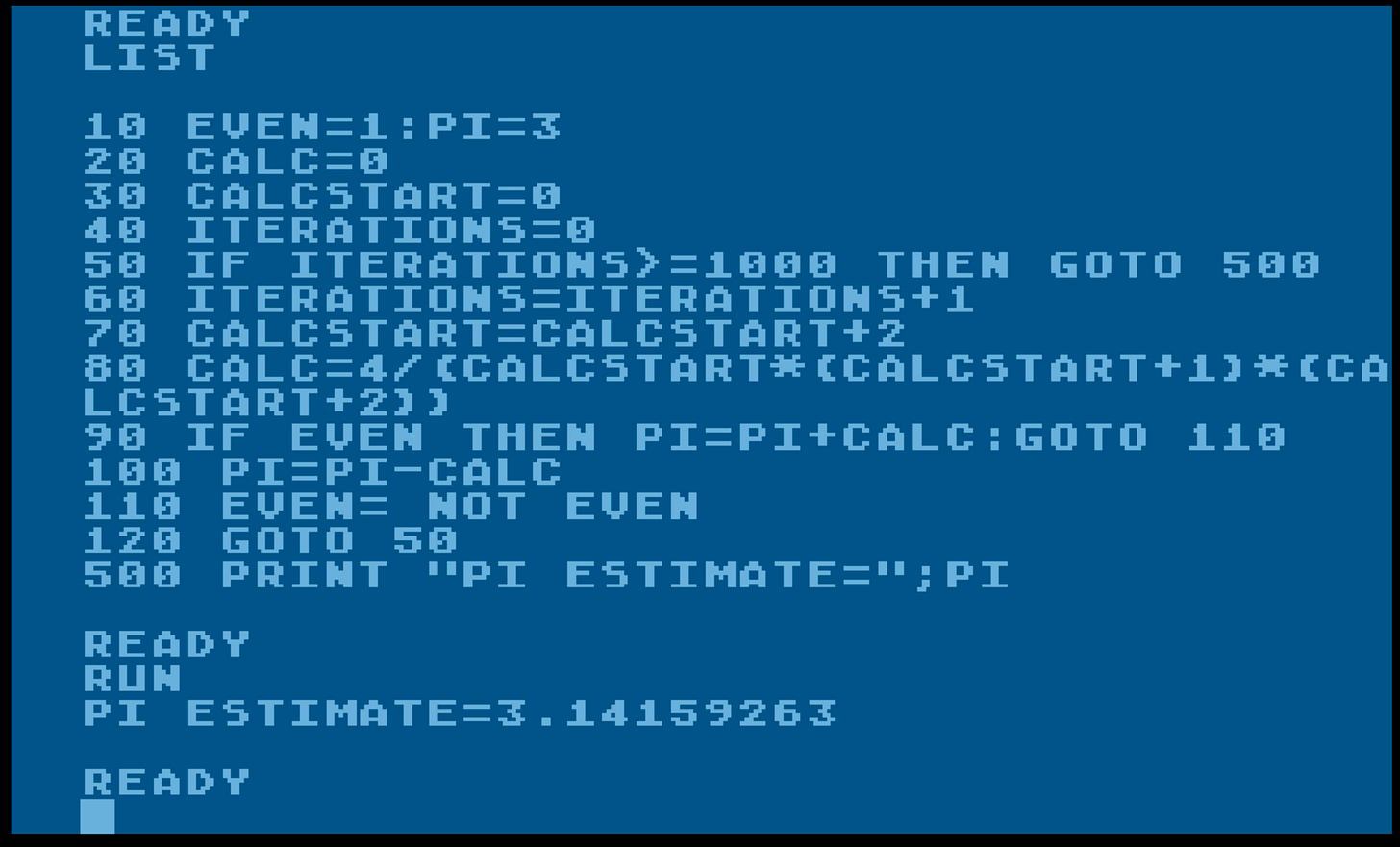Pi Day: Estimating the Value of Pi with BASIC
3.14
Thanks for reading Goto 10! This is a free article, but if you want more great retro content, consider becoming a free or paid subscriber.
It's Pi day (March 14, or 314 in the US) and one question you may be wondering is “how is Pi calculated?”
Measuring circles can give a rough estimate, but an infinite series is perhaps a better and more common way to do it. As described on Calculating Pi at MathCareers.org.uk, the Nilakantha Series works pretty well. Its formula looks like this:
Nilakantha Series: π = 3 + 4 / (2×3×4) − 4 / (4×5×6) + 4 / (6×7×8) − 4 / (8×9×10) + …
You ought to be able to figure out a pattern from that. And it’s a short leap to convert that to BASIC code. Here’s some short BASIC code1 that calculates Pi using the Nilakantha Series:
The above code correctly calculated the first 7 digits of Pi in about 47 seconds. Unfortunately, even on modern computers calculating significantly more digits of Pi with this method is not really practical using the floating point data type used in most programming languages.



